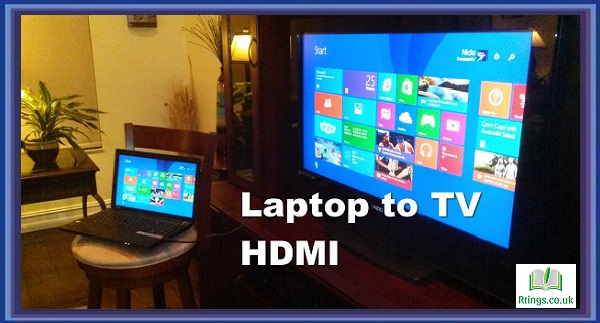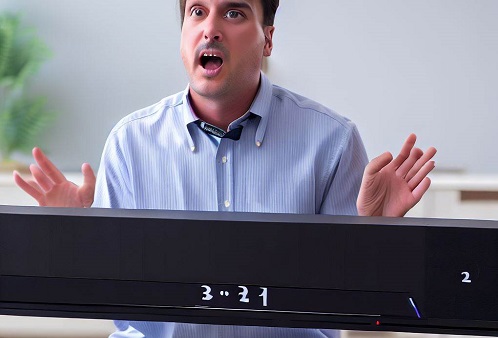Ensure that your iPhone and Samsung Smart TV support the same connectivity options. For example, if you have an older iPhone model without AirPlay support, you can still connect using an HDMI adapter or screen mirroring.
Connect using AirPlay
If you have an iPhone with AirPlay support and a Samsung Smart TV with built-in AirPlay functionality (model year 2018 or later), you can use AirPlay to connect wirelessly:
- Ensure your iPhone and Samsung Smart TV are connected to the same Wi-Fi network.
- Swipe down from the top-right corner to open the Control Center on your iPhone.
- Tap the “Screen Mirroring” or “AirPlay” icon.
- A list of available devices will appear; select your Samsung Smart TV from the list.
- Enter the AirPlay code displayed on your TV if prompted.
- Your iPhone’s screen will be mirrored on the Samsung Smart TV.
Connect using an HDMI adapter
If your iPhone does not support AirPlay or your Samsung Smart TV does not have built-in AirPlay functionality, you can use an HDMI adapter to establish a physical connection:
- Purchase a Lightning Digital AV Adapter from Apple or a reputable third-party manufacturer.
- Connect the Lightning end of the adapter to your iPhone and the HDMI end to an available HDMI input on your Samsung Smart TV.
- Switch your TV’s input to the corresponding HDMI port.
- Your iPhone’s screen should now be displayed on the TV. You may need to adjust the TV’s display settings to optimize the image.
Connect using screen mirroring
If you have an iPhone and a Samsung Smart TV that support screen mirroring (also known as screen casting or mirroring):
- Ensure both devices are connected to the same Wi-Fi network.
- Go to the input/source menu on your Samsung Smart TV and select the screen mirroring option.
- Open the Control Center on your iPhone by swiping down from the top-right corner (or bottom edge on older models).
- Tap the “Screen Mirroring” or “AirPlay” icon.
- A list of available devices will appear; select your Samsung Smart TV from the list.
- Enter the code displayed on your TV if prompted.
- Your iPhone’s screen will be mirrored on the Samsung Smart TV.
Please note that the exact steps and availability of these features may vary depending on the iPhone model, iOS version, and Samsung Smart TV model. Refer to the user manuals or manufacturer’s support websites for detailed instructions on your devices.
Conclusion
Connecting your iPhone to a Samsung Smart TV offers a convenient way to share and enjoy content on a larger screen. Whether you use AirPlay, an HDMI adapter, or screen mirroring, these methods enable you to stream videos, display photos, or play games from your iPhone on your Samsung Smart TV. Follow the steps outlined above, ensure compatibility between your devices, and enjoy the enhanced viewing experience with iPhone connectivity to your Samsung Smart TV.
Frequently Asked Questions (FAQs)
Can I use my smart TV without an internet connection?
Yes, you can use your smart TV without an internet connection. While smart TVs offer various online features and streaming capabilities, they can still function as regular TVs for watching cable/satellite channels, playing DVDs or Blu-rays, or connecting external devices like gaming consoles or media players. Without an internet connection, you won’t have access to streaming services, web browsing, or app functionality that require an internet connection. However, you can still enjoy traditional TV content and use the TV’s built-in features that do not rely on the internet. If you plan to use your smart TV’s online features, connect it to the internet later to fully utilize its smart capabilities.
Can I control my smart TV with a universal remote?
Yes, you can control your smart TV with a universal remote. Universal remotes are designed to work with various devices, including smart TVs. To use a universal remote with your smart TV, follow these steps:
Ensure your universal remote is compatible with your smart TV brand and model. Check the remote’s user manual or specifications for compatibility information.
Locate the programming instructions for your universal remote. This is typically found in the user manual or manufacturer’s website.
Turn on your smart TV and the universal remote.
Follow the programming instructions to set up the universal remote for your smart TV. This usually involves entering a specific code or using an automatic code search feature.
Test the universal remote once the programming is complete to ensure it can control your smart TV. Check if you can adjust the volume, change channels, and navigate the TV’s menus using the universal remote.
Note that while a universal remote can control the basic functions of your smart TV, some advanced features or smart functionalities may not be fully accessible. Consult the universal remote’s user manual or the manufacturer’s support for additional guidance on programming and using the remote with your smart TV.
Can I use a soundbar with my existing TV speakers?
Yes, you can use a soundbar with your existing TV speakers. A soundbar is a standalone audio device that enhances the audio quality of your TV. It can be connected to your TV through HDMI, optical audio, or Bluetooth, depending on the available connectivity options on your TV and soundbar.
To use a soundbar with your existing TV speakers, follow these steps:
Connect the soundbar to your TV using the appropriate cable or wireless.
Power on both the TV and soundbar.
Access the TV’s settings menu and navigate to the audio settings.
Select the audio output option and choose the soundbar as the primary audio output device.
Adjust the soundbar’s volume to your preference.
Connecting a soundbar to your TV allows you to enjoy improved audio quality and a more immersive viewing experience. Additionally, some soundbars allow you to adjust audio settings such as equalizer presets or surround sound modes to enhance the sound output further.








